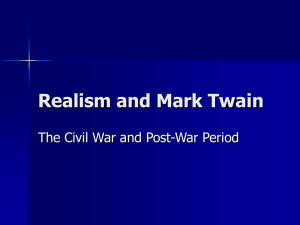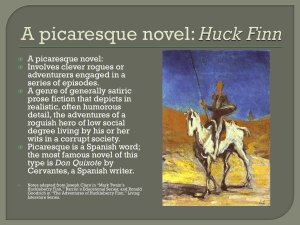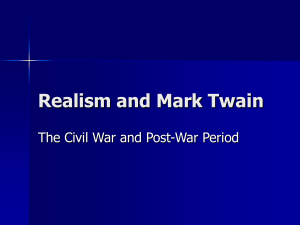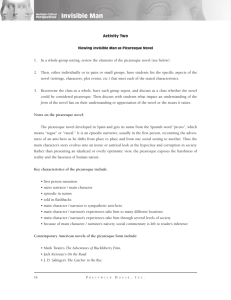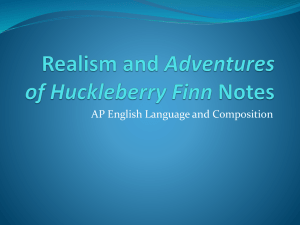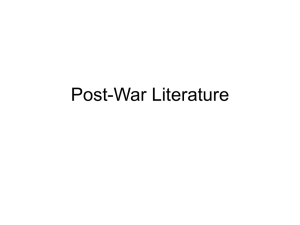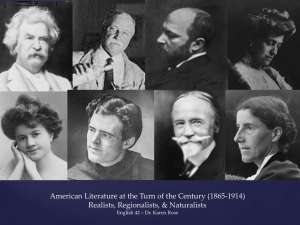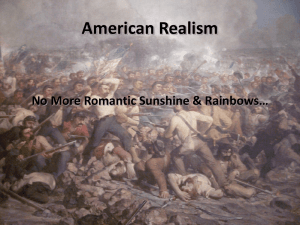picaresque novel
advertisement
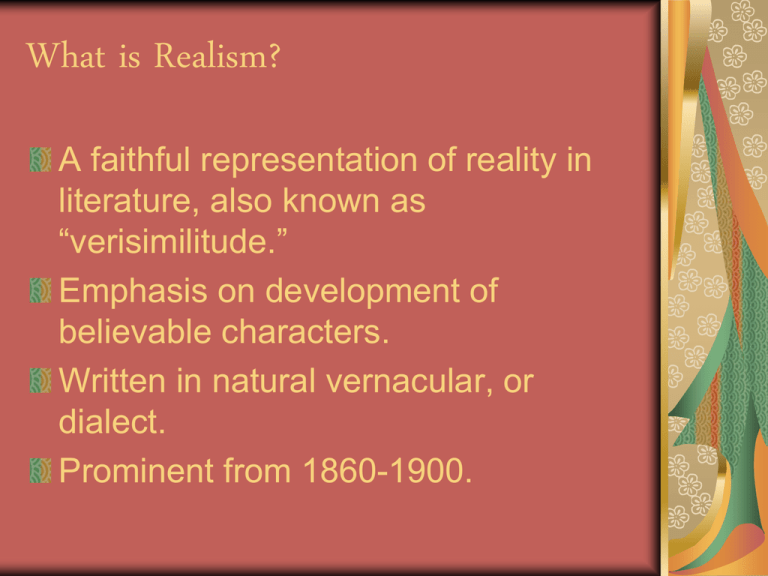
What is Realism? A faithful representation of reality in literature, also known as “verisimilitude.” Emphasis on development of believable characters. Written in natural vernacular, or dialect. Prominent from 1860-1900. Realism William Dean Howells said realism “is nothing more and nothing less than the truthful treatment of something.” Realist Writers Mark Twain William Dean Howells Henry James Edgar Lee Masters Why did Realism develop? The Civil War The urbanization and industrialization of America As a reaction to Romanticism Increasing rates of democracy and literacy The emerging middle class Upheaval and social change in the latter half of the 19th century What is Regionalism? Often called “local color.” Focuses on characters, dialect, customs, topography, and other features specific to a certain region (eg. the South) Coincided with Realism and sharing many of the same traits. Prominent from 1865-1895. Why did Regionalism develop? Dual influence of Romanticism and Realism The Civil War and the building of a national identity An outgrowth of realism with more focus on a particular setting and its influence over characters Points to Remember… Realism, Regionalism, and Naturalism are intertwined and connected. Their influence has dominated most literature created since 1920, though the movement itself is dated to roughly that point. They are truly American modes of writing. Twain’s realism Twain’s work was realistic in his use of colloquial and vernacular speech, including regional dialects, and his parade of characters from everyday life. The picaresque novel The picaresque novel (Spanish: "picaresca" from "pícaro" for "rogue" or "rascal") is a type of fiction which is usually satirical and depicts, in realistic and often humorous detail, the adventures of a roguish hero (picaro) of low social class who lives by his wits in a corrupt society. Origin of picaresque novel This style of novel originated in 16th century Spain and flourished throughout Europe in the 17th and 18th centuries. It continues to influence modern literature. Don Quixote Miguel Cervantes’ Don Quixote is a famous example of a picaresque novel Don Quixote by Pablo Picasso The Don is an anti-hero(opposite of traditional hero): an old knight instead of a young one. He is poor. He reads book on knighthood and makes a fool of himself trying to imitate the heroes in those books. His companion is not a noble squire but a simple peasant, Sancho Panza, who is the opposite of the Don. He is a realist. He hasn't read any books. The Don's adventures are absurd, lower-class parodies of the adventures of the nobility in the medieval romances. Plaza de España , Madrid Huck Finn as a picaro Huck Finn is Twain’s version of a picaresque novel, and Tom Sawyer even alludes to Don Quixote at the beginning of the novel. This reference is called a literary allusion. What role do Huck and Tom play in the book in relation to Don and Sancho? How is Huck Finn a picaresque novel?

